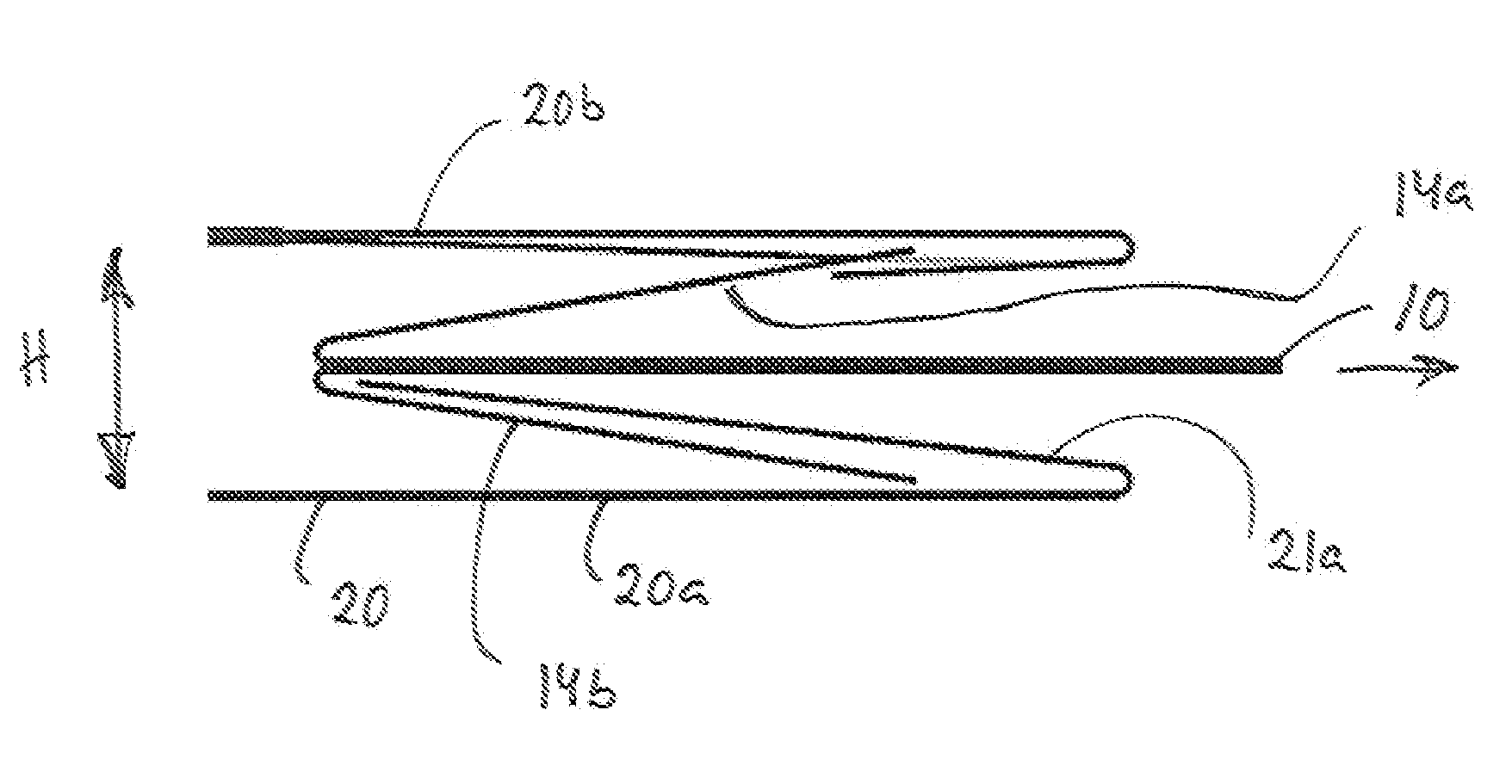Insert and package formed of an insert in a sleeve
a technology of insert and package, applied in the field of insert, can solve the problems of affecting the spring-back movement of the locking tab, increasing the size of the package in an undesired manner, and affecting the spring-back of both locking panels, so as to achieve the effect of improving the retention function
- Summary
- Abstract
- Description
- Claims
- Application Information
AI Technical Summary
Benefits of technology
Problems solved by technology
Method used
Image
Examples
Embodiment Construction
[0039]With reference to FIG. 1, the insert 10 comprises a base portion 11 formed of two portions 11a-b foldable towards each other along a fold line 12. The fold line 12 extends in the longitudinal direction; in the direction along which the insert 10 is slidable when received in a sleeve. The two portions 11a-b are in turn each formed of two portions 11a′, 11a″ and 11b′, 11b″ foldable along a set of fold lines 19 defining a small panel 11a″′, 11b″′ between the different portions of the base portion 11. The two portions 11a-b forming the base portion 11 may be provided with numerous blisters (not shown) containing unit dose products, such as medicine or the like. The insert 10 is further provided with two flap portions 14a-b foldably connected to the two portions 11a-b forming the base portion 11, respectively, via two fold lines 15a-b. The two flap portions 14a-b extend in the imaginary extension of respective portion 11a-b forming the base portion 11. The two fold lines 15a-b exte...
PUM
 Login to View More
Login to View More Abstract
Description
Claims
Application Information
 Login to View More
Login to View More - R&D
- Intellectual Property
- Life Sciences
- Materials
- Tech Scout
- Unparalleled Data Quality
- Higher Quality Content
- 60% Fewer Hallucinations
Browse by: Latest US Patents, China's latest patents, Technical Efficacy Thesaurus, Application Domain, Technology Topic, Popular Technical Reports.
© 2025 PatSnap. All rights reserved.Legal|Privacy policy|Modern Slavery Act Transparency Statement|Sitemap|About US| Contact US: help@patsnap.com



